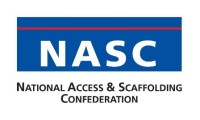There is a vast amount of technical information and knowledge available to support, inform, and guide decisions concerning Work at Height solutions. The performance requirements and suitability of any Work at Height solution can be confirmed using this technical knowledge, and it can also be used to check specifications and ensure that the resultant installations are fit for purpose. Higher Safety have intimate knowledge of the relevant Regulations, Standards, and accepted best practice for this broad range of solutions types. We bring this deep and detailed knowledge to bear on every project.

The underlying Regulations within the UK, are the Work at Height Regulations from 2005. These Regulations include a range of duties and responsibilities, and also introduce the Work at Height Hierarchy, which lays the foundation principles for Work at Height decisions. The Work at Height hierarchy includes the concept of “minimising height and consequence” enshrined within the principle of Fall Factors. The Regulations also introduce the importance of a Rescue plan and the urgency associated with its availability.



The vast array of Work at Height and Access solutions all have Codes of Practice associated with their specification and performance, and also both British, European, and International Standards for the ranges of equipment. In many cases there are Industry or Trade Bodies associated with the manufacture or installation of the equipment. Higher Safety support a great many of the Standards committees (philanthropically) and sit on many of the drafting committees. Higher Safety also have close ties with many of the Trade Bodies, and were instrumental in setting up both FASET and the Edge Protection Federation.


![]()




![]()

![]()
![]()
Much of this technical information is available to download, or accessible through links from this site. That which is not freely available, is referenced by product type or trade body to allow you access, to inform your decisions.
